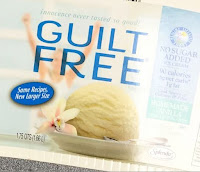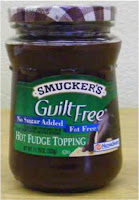With the recent appointments of Mark Lebow and Melanye K. Johnson, the Board’s membership now stands at twenty-seven (27) Administrative Trademark Judges. The current roster is set forth below, beginning with Chief Judge Gerard F. Rogers and Deputy Chief Judge Mark A. Thurmon, and then proceeding alphabetically.
Rogers, Gerard F. (Chief Judge): Appointed to TTAB in 1999;
Prior Professional Experience: Trademark Examining Attorney; Assistant to the Assistant Commissioner for Trademarks; TTAB Staff Attorney;
Education: B.A., University of Massachusetts Amherst; J.D.
magna cum laude, New England School of Law.
Thurmon, Mark A. (Deputy Chief Judge): Appointed to TTAB in 2019;
Prior Professional Experience: Private Practice; Adjunct Professor of Law, University of Texas School of Law; Assistant Professor of Law, Levin College of Law, University of Florida; Professor of Law at the Southern University Law Center, Southern University;
Education: B.S., Louisiana State University; J.D. with high honors, Duke University School of Law.
Adlin, Michael B.: Appointed to TTAB in 2012;
Prior Professional Experience: TTAB Interlocutory Attorney; USPTO Office of External Affairs; Private Practice;
Education: B.A., Duke University; J.D., Boston University School of Law.
Bergsman, Marc A.: Appointed to TTAB in 2006;
Prior Professional Experience: Trademark Examining Attorney; Trademark Managing Attorney; TTAB Interlocutory Attorney; Private Practice (Washington, D.C.);
Education: B.A., Miami University of Ohio; J.D., Cleveland Marshall College of Law, Cleveland State University.
Cataldo, Peter W.: Appointed to TTAB in 2006;
Prior Professional Experience: Trademark Examining Attorney; TTAB Interlocutory Attorney;
Education: B.A., Canisius College; J.D., Albany Law School.
Coggins, Robert H.: Appointed to TTAB in 2017;
Prior Professional Experience: Trademark Examining Attorney; TTAB Interlocutory Attorney;
Education: B.S., Davidson College; J.D., Wake Forest University School of Law.
Dunn, Elizabeth A.: Appointed to TTAB in 2019;
Prior Professional Experience: Trademark Examining Attorney; TTAB Interlocutory Attorney;
Education: B.A., Boston University; J.D., American University Washington College of Law.
English, Christen M.: Appointed to TTAB in 2019;
Prior Professional Experience: Private Practice; TTAB Interlocutory Attorney;
Education: B.A., Boston College; J.D. Catholic University Columbus School of Law.
Goodman, Cheryl S.: Appointed to TTAB in 2014;
Prior Professional Experience: Trademark Examining Attorney; TTAB Interlocutory Attorney;
Education: B.A., University of Illinois; J.D., Florida State College of Law.
Greenbaum, Cindy B.: Appointed to TTAB in 2012;
Prior Professional Experience: Private Practice (New York and Washington, D.C.); Trademark Examining Attorney; TTAB Interlocutory Attorney; TTAB Managing Interlocutory Attorney (2006-2011);
Education: Wharton School, University of Pennsylvania; J.D., New York University School of Law.
Heasley, David K.: Appointed to TTAB in 2015;
Prior Professional Experience: Private Practice (Washington, D.C.);
Education: B.A., The Johns Hopkins University; J.D., University of Maryland School of Law.
Hudis, Jonathan: Appointed to TTAB in 2019;
Prior Professional Experience: Private Practice (Washington, D.C. and Alexandria, Virginia);
Education: B.A., State University of New York at Albany; J.D., Brooklyn Law School.
Johnson, Melanye K.: Appointed to TTAB in 2020; Prior Professional Experience: Corporate Counsel; Senior Counsel, Office of General Counsel at the U.S. Department of Health and Human Services (HHS); Education: B.A., University of Michigan; J.D., Ohio State University Moritz College of Law.
Kuczma, Linda A.: Appointed to TTAB in 2011;
Prior Professional Experience: Private Practice (Chicago, Illinois);
Education: B.S., St. Mary's University; J.D., Loyola University Chicago School of Law.
Kuhlke, Karen: Appointed to TTAB in 2005;
Prior Professional Experience: Trademark Examining Attorney; TTAB Interlocutory Attorney; Private Practice (Washington, D.C.);
Education: B.A., University of Kansas; M.A., Columbia University; J.D., Georgetown University.
Larkin, Christopher: Appointed to TTAB in 2016;
Prior Professional Experience: Private Practice (Los Angeles, CA; New York, N.Y.);
Education: B.A., Stanford University; J.D., Columbia Law School.
Lebow, Mark: Appointed to TTAB in 2020; Prior Professional Experience: Private Practice (Alexandria, Virginia); Education: B.A., Florida Atlantic University; J.D., Hofstra University School of Law; LL.M., John Marshall Law School.
Lykos, Angela: Appointed to TTAB in 2010;
Prior Professional Experience: Trademark Examining Attorney; TTAB Interlocutory Attorney;
Private Practice; Education: B.A., M.A., The Johns Hopkins University; J.D., Duke University Law School.
Lynch, Cynthia C.: Appointed to TTAB in 2015:
Prior Professional Experience: Private Practice; Attorney-Advisor at the International Trade Commission; USPTO Assistant Solicitor: USPTO Administrator for Trademark Policy and Procedure;
Education: B.A., University of North Carolina; J.D., University of Virginia School of Law.
Mermelstein, David: Appointed to TTAB in 2006:
Prior Professional Experience: Trademark Examining Attorney; TTAB Interlocutory Attorney; TTAB Supervisory Interlocutory Attorney;
Education: B.A., New College, Hofstra University; J.D., American University.
Pologeorgis, George C: Appointed to TTAB in 2015;
Prior Professional Experience: TTAB Interlocutory Attorney; TTAB Attorney in the Office of Trademark Quality Review and Training; Trademark Examining Attorney; Private Practice;
Education: B.A., University of Pennsylvania; J.D., George Washington University National Law Center.
Ritchie, Lorelei: Appointed to TTAB in 2008;
Prior Professional Experience: Private Practice; Arbitrator and Judge
pro tem, Orange and Los Angeles Counties, California; Intellectual Property Manager, U.C.L.A.; Adjunct Professor of Law, Loyola Law School, Los Angeles; Assistant Professor, Florida State University School of Law;
Education: A.B., Stanford University; J.D., Columbia University.
Shaw, Thomas: Appointed to TTAB in 2011;
Prior Professional Experience: Associate Solicitor at the USPTO; Managing Attorney; Senior Attorney; Trademark Examining Attorney;
Education: B.A., George Washington University; J.D., University of Miami School of Law.
Taylor, Jyll: Appointed to TTAB in 2006;
Prior Professional Experience: Trademark Examining Attorney; TTAB Interlocutory Attorney;
Education: B.A., University of North Carolina at Chapel Hill; J.D., Howard University School of Law.
Wellington, Thomas W.: Appointed to TTAB in 2007;
Prior Professional Experience: TTAB Interlocutory Attorney; Trademark Examining Attorney; Private Practice;
Education: B.A., University of Maryland at College Park; J.D., American University Washington College of Law.
Wolfson, Frances: Appointed to TTAB in 2010;
Prior Professional Experience: Trademark Examining Attorney; TTAB Interlocutory Attorney; Private Practice;
Education: B.A., U.C. Santa Barbara; J.D., U.C.L.A.
Zervas, Albert: Appointed to TTAB in 2005;
Prior Professional Experience: Trademark Examining Attorney; TTAB Interlocutory Attorney; Private Practice (New York and Washington, D.C.);
Education: B.A. and J.D., University of Virginia.
Text Copyright John L. Welch 2020.








































